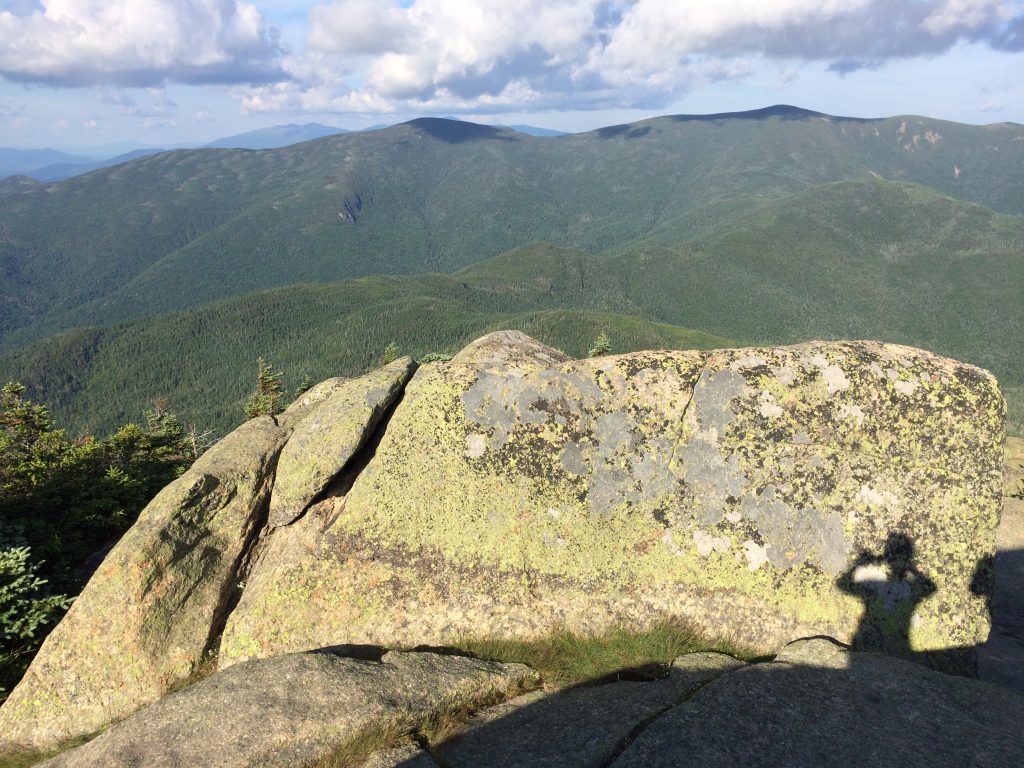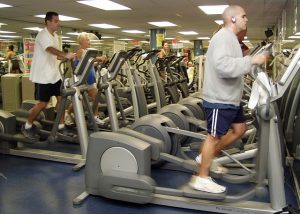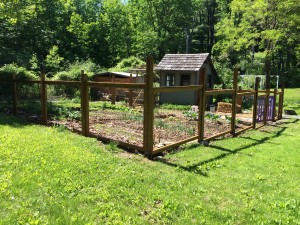OUTSIDE IN THE WMNF
I was one of the approximately six hundred and twenty-five thousand visitors forecast to visit New Hampshire over the holiday weekend. I went to climb North and South Hancock, two of New Hampshire’s high peaks.
We drove about two and a half hours to reach the parking lot at the Hancock Trailhead, which was filled to capacity; we had to park along the shoulder of the road. All the parking lots we’d passed were overfull.
This is recreational life in the White Mountain National Forest, one of the most heavily used in the country. This heavy use is due both to the natural beauty of the White Mountains and their proximity to the densely populated northeast.
The WMNF is just two hours from Boston, three hours from Montreal, and six from New York City. It’s the backyard for a huge population of urban dwellers who want to get outside. But it’s hardly wild.
The Cedar Creek Trail to the Hancock Loop Trail was not crowded, but it was unmistakably trodden. We met other hikers along the trail and at each summit. Nevertheless, there were moments of solitude in nature, and moments of sustained exertion to reach the summit followed by careful foot placement for a safe descent.
There were also lovely moments beside streams, great views, and solitude in nature for good stretches of the hike.
HAMSTER ON A WHEEL
Except for yoga, I like to exercise outside. I’ve tried swimming indoors, gym circuits, rowing machines, elliptical trainers and treadmills. I confess: I lack the inner resources to find the Zen in these activities. I just feel like a hamster on a wheel. I need to be outdoors. So it was good to see people out on the trail. Most, like me, were out for the day.
And yet.
And yet, there’s something that saddens me about all of us driving hours and hours to be outdoors. I understand that city dwellers have no choice. Even a resident of rural Vermont, like myself, has to drive forty minutes to reach the nearest mountain in the Green Mountain National Forest. I hike there often, but I head to the Whites for steeper terrain and longer views. I’m also a laconic peak-bagger. Over the past thirty-odd year’s I’ve climbed thirty-two of New Hampshire’s forty-eight mountains over four thousand feet.
But even peak-bagging is a form of commoditizing nature, which sometimes seems more like a museum we visit rather than a place that’s part of our lives for longer than it takes to get from the house to the car or the car to another indoor destination.
OUTDOORS IS NOT THE SAME AS OUTSIDE
Talking about “outdoors” this way makes it seem that indoors is the norm. With that point of view, the outdoors becomes threatening: a place of bad air, dangerous sun, menacing insects, and vicious wildlife. But the natural world is not more dangerous than the built environment.
It’s different.
And for reasons I can’t yet explain, I think it’s healthy for humans to walk in the forest and sail on the ocean, and grow something in the land, to smell the air and feel the wind and recognize where our food comes from, and maybe – at least for some of us – where our spiritual lives arise.
So this is what I’m thinking about this week, as I’ve been hiking in the mountains and planting more onions and parsley at home. I’ve also weeded the spinach, carrots and parsnips, purchased zinnia and cosmos starts, and stuck sunflower seeds into the ground. This is me, living in place.
TELL ME WHAT YOU THINK
I’m curious to know what your relationship is to the natural world. I invite you to let me know in the comment section below.




I like to think of myself as a vigorous retiree, filling the days with fruit and veggie gardening, fishing, kayaking, raising bird hunting dogs and apologizing for being late for my hot yoga class. All this after closing out a 42-year career practicing law. God help me if I should become unable to do these physical things…….I don’t even play cards.
Thanks for taking the time to write.
It’s good to hear another person feels like indoor aerobics are like being in a hamster wheel. I joined a health club for a month years ago and felt exactly the same way.
Deb, your blog this week made me feel less guilty for the fact that I frequently travel “Outside” (Alaska speak for anywhere outside of Alaska). Yes, this means I still have a big carbon footprint and am most definitely not Living in Place a lot of the time, but I never thought about how low my carbon footprint is when I’m home in Juneau. With no roads out of town and only about 60+ miles of road in the Juneau area, all I need to sustain me (work, food and wilderness) is within walking distance of my front door. I feel fortunate that I can go days without using my car, although I’m grateful that it’s there to get my kayak in the water or to hike the trails that are “Out the Road.” Come see for yourself what I love about Juneau! Jan
You are so lucky to be able to walk “out the road”; Tim and I are looking forward to trying this for ourselves next year!
I definitely agree that there’s some intangible, almost spiritual value to spending time outdoors. I feel it a little on a day hike, or even on my bike ride to work, but overwhelmingly when I get out overnight and see the stars miles from lights and noise.
My friend/fellow blogger wrote a little post a while back that captures something of this. You might enjoy it?http://www.girlinvestigates.com/2016/09/27/the-national-park-service/
Hope the garden grows well!
Thanks for your thoughts and for your friend’s post. Yes, we’re indebted to those who created our National Parks; they’re a majestic gift.
A little over 3 months my leg was broken (by my otherwise very good pooch running into it). I started driving again a few days ago, and I’m mostly walking with only one crutch now, but for those three months I went from being out at least 3 hours a day with my dog to getting outside maybe 15 minutes a day to stand in whatever sunshine there might have been. I am most happiest – read, most connected to myself – when on a trail, feet traveling at a pace I call “moseying”. It’s usually hard for me to turn around and go back: “Let’s just see what’s around that bend up there” usually becomes, “Oops, I’ve run out of water for the return to the car, oh well, better hoof it.” At some early point in this leg-healing process, part of me shut down. My body, so used to fresh air and movement as a way even just to process whatever’s going on in my life, couldn’t handle the prospect of unknown numbers of weeks sitting on my butt on the sofa. Early morning, my very favorite time of day, became almost unbearable because I knew that instead of brushing my teeth and heading out with pooch, I was going to hobble from bed to bathroom to sofa. Immobility drives me nearly out of my mind, and it turned out that shutting down took precedence over my initial idea of doing extra meditating. I’ve been exhausted from doing nothing, which is much less nice than being tired from working for hours in the garden or exploring new trails with said pooch. I need the outdoors to ground me, to keep me sane, to give me a place to land. Yesterday afternoon we went to a field on the edge of town and she ran and sniffed while I slowly walked, bi-crutch, on the dirt path surrounding the freshly-mown hay, soaking up the sun, the birdsong, the smells. It hasn’t been all bad, these 3 months, but yesterday my smile came from something bigger even than my friends’ love, and I breathed deeply for what felt like the first time in way too long. I never took my mobility for granted; I will love it even more once I leave these crutches behind and get myself back outdoors.
Jenny, Thanks for your moving testimonial about your need for the outdoors. I’m glad your leg is healing and that you and the pooch will again be back on the trails. All best wishes, Deborah.